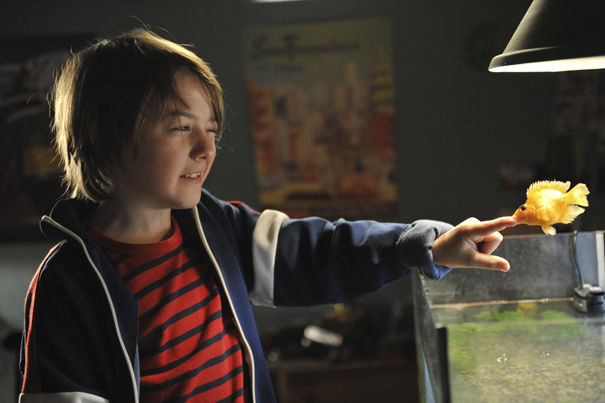Superfilm
A multi-layered construction from Berlinale Generation, SUPERBROTHER knows how to enthral its designated audience.

SUPERBROTHER
Children’s clatter and chatter, sounds of amazement and enthusiastic claps filled the movie theatre during and after the projection of Berlinale Generation’s SUPERBROTHER (SUPERBROR, Denmark). Going with the flow I just let myself get easily impressed, and truly enjoyed this movie.
This is the fourth feature film of critically acclaimed Danish director Birger Larsen, who works with one of Denmark’s most popular cinematographers, Eric Kress, and experienced producer, Åke Sandgren. What differentiates SUPERBROTHER from other children’s films is the multi-storey-like construction that Larsen and his crew built. There are three main levels of this with different proportions. The first and most important “floor” is the confidently assembled main story aimed primarily at children. Ten year-old Anton and his older brother Buller are raised by their mother. The conflict itself, however, lies in the basement. Buller is autistic. The mother has not been able to come to terms with her son’s disability and constantly tries improving his life. Her efforts affect the younger brother, who would like to have a “normal” bigger brother who protects, helps and teaches him.
The temporary answer comes from outer space, the vast top floor of the building. The alien magic toy they find can transform Buller into the conventional bigger brother and also endows him with some superpowers. The sci-fi element, aside from its obvious attraction, can also be metaphorically or psychoanalytically interpreted – just in case someone wants to try such an approach. The emphasis, however, always remains on the children’s story. Taking advantage of this emphasis, the director cleverly avoids taking a stand on the delicate problem of autism and the practical and moral handling of children with such disabilities. Therefore the social issues that lie in the basement are never fully exposed. The open ending of the film also points to the diplomatic attitude of the director but it definitely stirs the children’s imagination.
There are some smaller pieces in the film that tend to fall out of the “building,” but the structure itself is stable. The special effects are credible and well-done. This film can be truly appreciated if taken for what it is – a children’s film. And when the children grow up, they can still appreciate it, understanding its humour, and why only the adults laughed at some scenes.


301 Moved Permanently